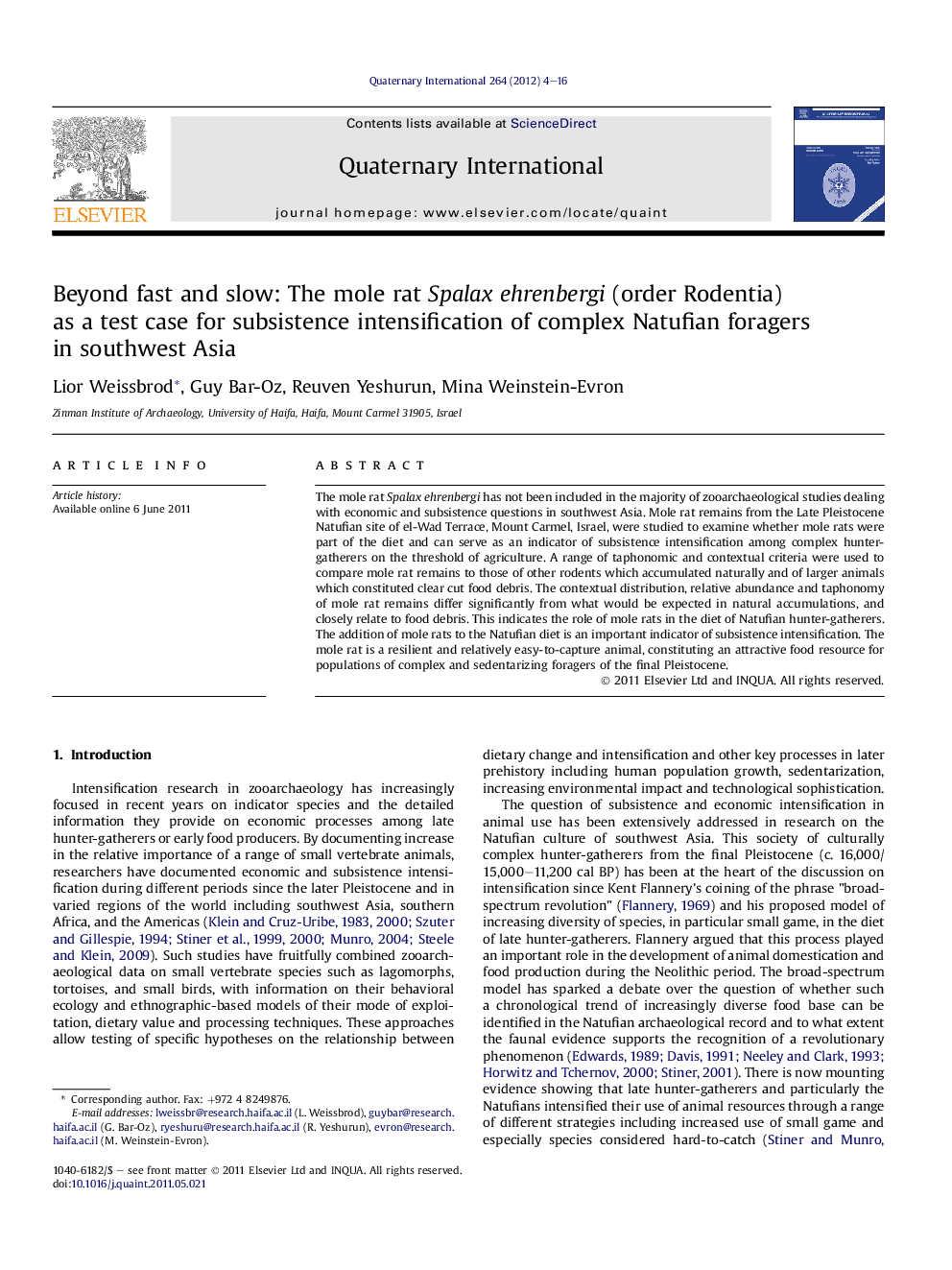| کد مقاله | کد نشریه | سال انتشار | مقاله انگلیسی | نسخه تمام متن |
|---|---|---|---|---|
| 1042761 | 1484221 | 2012 | 13 صفحه PDF | دانلود رایگان |

The mole rat Spalax ehrenbergi has not been included in the majority of zooarchaeological studies dealing with economic and subsistence questions in southwest Asia. Mole rat remains from the Late Pleistocene Natufian site of el-Wad Terrace, Mount Carmel, Israel, were studied to examine whether mole rats were part of the diet and can serve as an indicator of subsistence intensification among complex hunter-gatherers on the threshold of agriculture. A range of taphonomic and contextual criteria were used to compare mole rat remains to those of other rodents which accumulated naturally and of larger animals which constituted clear cut food debris. The contextual distribution, relative abundance and taphonomy of mole rat remains differ significantly from what would be expected in natural accumulations, and closely relate to food debris. This indicates the role of mole rats in the diet of Natufian hunter-gatherers. The addition of mole rats to the Natufian diet is an important indicator of subsistence intensification. The mole rat is a resilient and relatively easy-to-capture animal, constituting an attractive food resource for populations of complex and sedentarizing foragers of the final Pleistocene.
Journal: Quaternary International - Volume 264, 20 June 2012, Pages 4–16